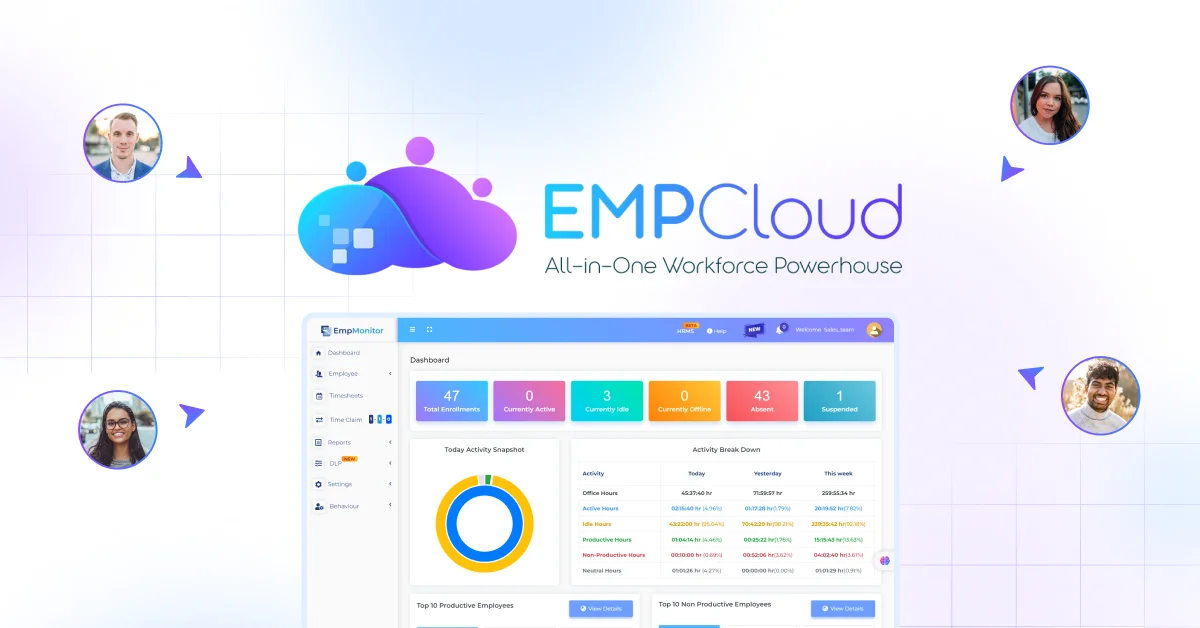
Intellectual property theft is becoming a serious concern for modern businesses, especially as ideas now carry real financial value. Your brand identity, software, product formulas, research data, marketing campaigns, and customer lists all contribute to long-term advantage in the market. When someone steals or copies these assets, it weakens innovation, damages reputation, and reduces your ability to compete effectively.
With remote work and cross-border collaboration growing rapidly, the risk of unauthorized access rises every single day. Losing control of digital or physical creative output can lead to costly lawsuits, revenue losses, and long-term credibility issues. Companies that take a proactive stance toward protecting their intellectual assets stay resilient, while those that ignore the threat eventually face consequences that are far more expensive than prevention.
Hit ‘Play’ Button & Tune Into The Blog!
What Is The Foundation Of Intellectual Property & Why Does It Matter?
Intellectual property refers to creations of the mind. When you invent a product, write content, design a logo, build software, or develop business processes, you produce something marketable. This doesn’t just serve as artistic expression; it translates directly into modern commerce. Market leaders hold patents, trademarks, copyrights, and trade secrets because ideas power growth.
Without protection, competitors can copy work and profit without effort. This issue forms the heart of intellectual property theft, and stealing intellectual property is a crime called infringement under various national and international laws. Countries acknowledge this problem, which is why international agreements and legal frameworks attempt to regulate idea ownership. Innovation thrives when people have an incentive to create, and a world without protection would discourage research.
Why Intellectual Property Theft Keeps Rising Globally?
Many digital files now move instantly across the world. This improves collaboration, but it also creates security gaps. Remote work opens more devices to cyberattacks. Cloud storage misconfigurations leak trade secrets. Strong endpoint security software is now critical to prevent data leaks through employee devices.
Employees occasionally download confidential data onto personal devices. These factors contribute to a spike in intellectual property theft, often referred to simply as stealing IP in corporate and cybersecurity environments.
Key reasons behind the rise:
- Increased remote access to sensitive company systems.
- Cloud configuration errors exposing confidential files.
- Employees transferring data to personal devices.
- Hackers selling stolen data for quick profits
- Competitors bypass costly research by stealing innovations.
- Complex international laws make prosecution difficult
As technology grows, illegal access becomes easier. Law enforcement faces jurisdiction issues, making it harder to catch offenders, especially when the thief is located overseas. Let me know if you want even shorter bullet points or more stats added.
Also Read:
Why Endpoint Security Software Matters For Modern Businesses?
What Are The Different Types Of Intellectual Property Theft?
Various forms of intellectual property theft demand different defensive strategies. In today’s digital economy, intellectual theft has become more sophisticated, making it essential for businesses to understand how ideas and creative assets can be misused.
Some of the most common forms include:
- Copyright Infringement: Unauthorized use, copying, or distribution of creative content such as videos, graphics, and written materials.
- Patent Breaches: Theft of inventions, technical processes, or scientific innovations protected by patent law.
- Trademark Violation: Counterfeit goods or branding elements that mimic logos, taglines, or packaging to confuse customers.
- Trade Secret Theft: Stolen formulas, recipes, strategies, or internal processes that offer competitive advantage.
- Corporate Data Theft: Attackers gaining access to confidential folders through phishing emails or compromised user accounts.
- Software Piracy: Duplicating, distributing, or using paid software without the proper license.
- Insider Attacks: Employees leaking or selling business information for personal gain.
- Partner Misuse: Vendors or collaborators mishandling shared resources or failing to follow security agreements.
While external cyberattacks remain a threat, internal misuse plays an equally critical role. Companies often underestimate how easily sensitive files can leak through personal devices, unauthorized access, or accidental sharing.
This is where workforce platforms like EmpCloud support organizations by providing productivity tracking, automated timesheets, employee access history, and data loss prevention tools. By centralizing workforce control, businesses strengthen internal security, maintain accountability, and significantly reduce the risk of confidential information leaking into the wrong hands.
How Intellectual Property Theft Affects Small Businesses?
Small companies face a unique threat because they usually lack advanced security budgets, legal support, or dedicated IT defenses. When intellectual property theft hits, many struggle to survive because:
- Competitors can mass-produce stolen product designs faster and cheaper
- Copied marketing strategies remove brand differentiation
- Exclusive research and development advantages disappear instantly
- Customer trust declines when duplicate products flood the market
- Legal battles drain limited financial resources
- Investors lose confidence due to weakened competitive edge
Even a single breach can damage growth potential, stall innovation, and push smaller businesses out of the market entirely.
How Do Employees Contribute To Intellectual Property Theft?
Not every attack comes from malicious hackers. Sometimes the threat originates internally because theft of intellectual property often begins with people who already have legitimate access to business systems. Weak monitoring of IOC cyber security (Indicators of Compromise) can make it harder to detect suspicious insider behavior early.
- Employees may take confidential documents when switching jobs, allowing competitors to gain strategic advantages.
- Contractors often handle sensitive files, and improper downloads can expose proprietary data outside authorized channels.
- Anyone with system access can intentionally misuse credentials, leading to unauthorized copying, transferring, or editing of protected assets.
- Sharing internal information with unauthorized parties, even casually, can leak product designs, customer records, or research details.
- Intentional sabotage for personal gain or revenge can result in deleted files, leaked prototypes, or corrupted databases.
- Untrained staff may fall for phishing attempts, unknowingly granting hackers access to intellectual property through compromised accounts.
- Using personal devices to store work data weakens security and increases the risk of accidental exposure or theft.
Better training, restricted access, and continuous monitoring help organizations minimize these internal risks.
Also Read:
How To Master IOC Cybersecurity For Stronger Threat Defense?
How Does Artificial Intelligence Accelerate Intellectual Property Theft?
AI offers tremendous benefits, but it also speeds up intellectual property theft across multiple industries. Attackers now use machine learning to automate phishing campaigns and quickly identify security vulnerabilities that would normally take weeks to detect manually.
Content-scraping tools harvest copyrighted material at scale, pulling written content, product descriptions, images, or designs from websites without permission. Deepfake tools can imitate branding, visuals, and even spokesperson voices, making it harder for customers to distinguish real products from imitations.
Some warning signs that may indicate intellectual property theft include:
- Competitors launching similar products suspiciously fast
- Customer data appearing in unfamiliar external channels
- Internal documents showing up on public platforms or being leaked
- Sudden spikes in access attempts to confidential project folders
Because AI-driven attacks are faster and harder to detect, companies need stronger visibility into how data flows within their workforce. Platforms like EmpCloud help businesses monitor access activity, track file movement, and create accountability across teams.
By centralizing these controls, organizations can respond to warning signs early and prevent sensitive ideas from being exploited.
How EmpCloud Strengthens Security Against Internal Data Misuse?
As organizations scale, keeping visibility across distributed teams becomes challenging. Without centralized control, unauthorized data access, improper file sharing, and weak workforce monitoring increase the chances of intellectual property theft. EmpCloud solves this challenge by offering a unified workforce management platform that gives businesses full operational clarity.
EmpCloud empowers companies to maintain secure, compliant, and well-structured digital environments through the following features:
Manager-Centric Capabilities:
- Productivity Tracking: Gain real-time insights into employee activity to detect unusual work behavior or suspicious patterns.
- Project Management: Monitor deliverables, assignments, and timelines to ensure accountability throughout development cycles.
- Geo-Location Tracking: Track field team movements to maintain operational transparency.
- Manage Tasks & Opportunities: Assign tasks securely while preventing unauthorized access to sensitive project data.
- Data Loss Prevention: Stop confidential files from being transferred, leaked, or downloaded onto unsecured devices.
- Report Generation: Generate detailed activity reports to support audits and internal investigations.
HR-Centric Capabilities:
- Face Recognition Attendance System: Enhance workplace security through identity-verified access.
- Leave & Attendance Tracking: Track employee availability without manual intervention.
- Automated Timesheets: Keep accurate time logs that prevent falsified data entries.
- Employee Access History: Maintain comprehensive logs of system interactions to trace responsibility during suspicious incidents.
- Employee Requests Management: Manage corrections and work-from-home requests through secure channels.
- Exit Management: Prevent ex-employees from retaining unauthorized access to systems or sensitive documents.
- Employee Payroll Management: Secure payroll data while ensuring accuracy and compliance.
EmpCloud also offers centralized insights through a unified dashboard that displays:
- Timesheet data
- Live employee locations
- Contactless attendance logs
- Task allocation status
By consolidating these metrics, EmpCloud reduces blind spots, improves oversight, and helps leaders take proactive action before risks escalate. When the internal environment is transparent, the chance of confidential idea leakage drastically drops. For organizations prioritizing data protection, EmpCloud functions as a smart, end-to-end safeguard.
What Are The Most Effective Strategies To Prevent Intellectual Property Theft?
Businesses must invest in strong security measures to stay protected. Firewalls, multi-factor authentication, and encryption help secure files and communication channels. Employee training programs reduce accidental leaks, while thorough documentation proves ownership when legal issues arise.
Access control systems regulate permission levels, ensuring only authorized staff can open sensitive folders. Collaboration platforms should always use secure file-sharing methods to prevent unauthorized duplication.
Additional strategies include:
- Education Helps Fight Intellectual Property Theft
- Employees often cause theft unknowingly due to poor awareness
- Regular workshops teach security best practices and data-handling rules
- Understanding plagiarism and policy violations changes workplace behavior
- Schools and training programs should teach the long-term impact of copying work
Consumer Responsibility Matters:
- Purchasing counterfeit goods knowingly fuels intellectual property theft
- Every illegal download or pirated copy supports cybercrime networks
- Ethical buying habits protect innovation, creativity, and business growth
- Avoiding fake products helps maintain trust in legitimate brands
Proactive security and responsible behavior, internally and externally, form the strongest defense against intellectual property misuse.
How Is Technology Vulnerable To Intellectual Property Theft?
Technology businesses are highly vulnerable because digital products can be copied, modified, and redistributed quickly, making it harder to protect innovation and revenue.
Software piracy is a major threat
- Developers spend years creating software, and pirated copies erode revenue and devalue innovation.
- Many pirated tools contain hidden malware, spyware, or backdoors that compromise systems and steal data.
Intellectual property theft damages trust
- When stolen software or copied code circulates, users become confused about authenticity.
- Poor-quality pirated versions can harm brand reputation if customers associate bugs or security flaws with the original creator.
Avoid sharing work publicly before registration
- Early public exposure gives attackers an opportunity to copy or claim ownership before legal protection is applied.
Use watermarks on files and digital assets
- Watermarks discourage unauthorized usage by proving ownership and making theft harder to monetize.
Update software regularly
- Outdated systems contain vulnerabilities that attackers can exploit to access intellectual property.
Never store confidential data on unsecured drives
- External drives, shared folders, or personal devices increase leakage risk if stolen or infected by malware.
Create strong passwords and use two-factor authentication
- Extra security layers prevent unauthorized access to intellectual property repositories, project files, and accounts.
By combining secure habits, workload prioritization, and protective tools, companies in the technology space can drastically reduce the daily risk of intellectual property loss.
Also Read:
How To Master Workload Prioritization For Higher Productivity?
How Can Businesses Recover After Intellectual Property Theft?
Key steps in the recovery process include:
Documenting all evidence:
Collect timestamps, file versions, communication logs, and activity trails to prove unauthorized access occurred. Solid documentation strengthens legal claims and insurance support.
Reviewing activity logs:
System logs help trace who accessed files, from where, and at what time. They reveal internal mistakes, external intrusion patterns, and potential security gaps.
Investigating the breach source:
A structured investigation reveals whether the leak came from an employee, contractor, phishing attempt, or cloud misconfiguration. This prevents similar incidents from repeating.
Consulting legal experts:
Specialized attorneys help determine which intellectual property rights were violated and guide the business in claiming damages, compensation, or ownership restoration.
Seeking injunctions:
Injunctions legally force competitors or sellers to stop producing, distributing, or profiting from stolen products immediately, reducing further market damage.
Reinforcing internal security policies:
After a breach, businesses should update access permissions, password hygiene, training programs, and device management rules to seal weak points.
Swift, structured action helps control damage, protect brand reputation, and prevent future exploitation of stolen creative assets.
Final Thoughts
The modern world thrives on creativity, and businesses, artists, and innovators rely on idea ownership to survive. Intellectual property theft harms economies, slows innovation, and demands stronger ethical awareness. To stay protected, creators should document development and register assets early.
Proper handling of stolen intellectual property ensures fair justice, as infringement laws carry strict penalties. To further reduce internal risks, platforms like EmpCloud provide centralized workforce visibility, data control, and real-time monitoring to safeguard sensitive information.
FAQs
1. How often should a business review its intellectual property protection policies?
Businesses should review IP security policies at least once every 6–12 months, or immediately after major software updates, mergers, acquisitions, or workforce restructuring.
2. Can small businesses insure their intellectual property against theft?
Yes. Specialized cyber and intellectual property insurance policies exist to cover legal costs, investigative expenses, and financial losses associated with IP theft.
3. What role does employee onboarding play in intellectual property protection?
During onboarding, employees should sign confidentiality agreements, receive data-handling guidelines, and complete cybersecurity awareness training. Early education reduces the risk of accidental leaks.






